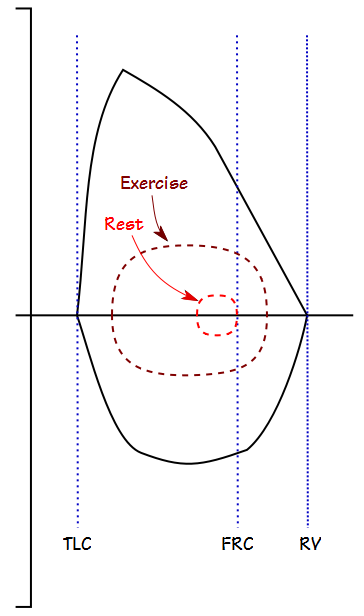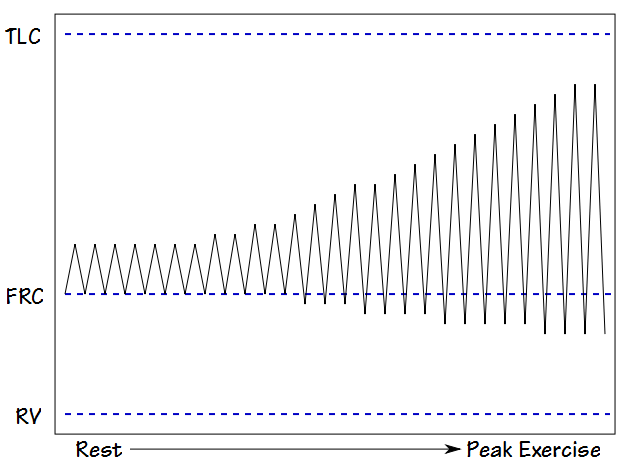Determining whether a subject has a ventilatory limitation to exercise used to be fairly simple since it was based solely on the maximum minute ventilation (Ve) as a percent of predicted. There has been some mild controversy about how the predicted maximum ventilation is derived (FEV1 x 35, FEV1 x 40 or measured MVV) but these don’t affect the overall approach. Several decades ago however, it was realized that subjects with COPD tended to hyperinflate when their ventilation increased and that this hyperinflation could act to limit their maximum ventilation at levels below that predicted by minute ventilation alone.
The fact that FRC could change during exercise was hypothesized by numerous investigators but the ability to measure FRC under these conditions is technically difficult and this led to somewhat contradictory results. About 25 years ago it was realized that it wasn’t necessary to measure FRC, just the change in FRC and that this could be done with an Inspiratory Capacity (IC) measurement.
The maximum ventilatory capacity for any given individual is generally limited by their maximum flow-volume loop envelope. When a person with normal lungs exercises both their tidal volume and their inspiratory and expiratory flow rates increase.


